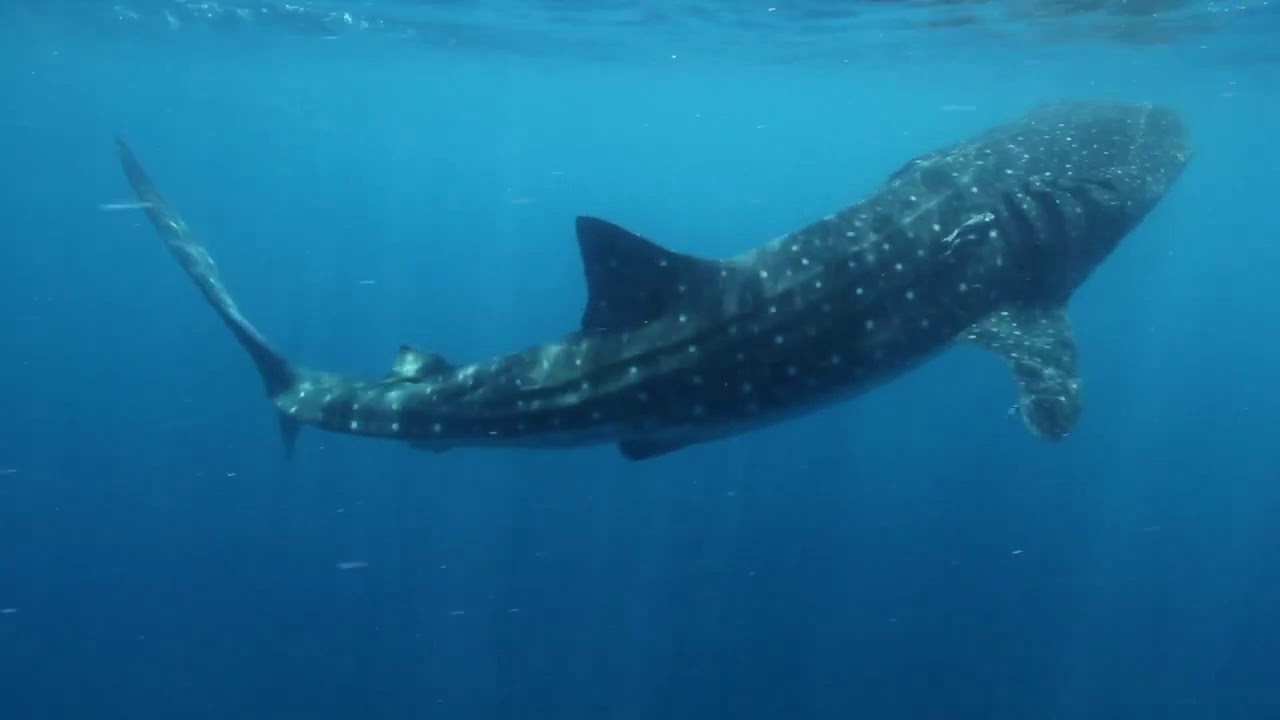Oris’s mission to bring Change for the Better turns to the Earth’s delicate ecosystem and to a watch that highlights the threat to the largest fish in the ocean, the magnificent whale shark. The Oris Whale Shark Limited Edition is based on the Oris Aquis GMT diver’s watch and is limited to 2,016 pieces to mark the year of the IUCN’s landmark whale shark announcement.

Back into the deep
Most of life as we experience it is on land. Because of this, it has taken us far longer to explore and understand the world’s oceans, but with every passing year, the picture becomes clearer. We now know, for example, that oceans cover three-quarters of the Earth’s surface, contain 97 per cent of the Earth’s water, and represent 99 per cent of the living space on the planet by volume.

Evidence also shows us that oceans absorb around 30 per cent of the carbon dioxide we produce, offsetting the impacts of global warming. According to the United Nations, more than three billion people depend on the oceans for their livelihoods. And incredibly, $3 trillion dollars, or 5 per cent of the world’s GDP, is generated by marine and coastal industries. The oceans are the source of life.

Despite this, we continue to abuse our oceans. Pollution levels are now critical (particularly plastics – the UN estimates one million plastic bottles are sold every minute), and ocean temperatures are at record highs, leading to events such as coral bleaching, as highlighted by previous Oris releases.

As worrying is that according to the Smithsonian Ocean Portal, there are as many as 2,270 species currently listed as endangered or threatened under the U.S. Endangered Species Act.
One of those is the whale shark, the ocean’s largest fish, which is the focus of the Oris Whale Shark Limited Edition. The new watch, has been created as part of our mission to bring Change for the Better and to clean, restore and protect the world’s water. Specifically, it’s made in support of the work of Oris ambassador Gerardo del Villar, an experienced explorer and photographer, who began photographing whale sharks more than 15 years ago.

“We’re not going to stop drawing attention to the issues facing the world’s water,” says Rolf Studer, Oris co-CEO. “We’re proud to work with Gerardo and support his work, but this is a drop in the ocean. To bring Change for the Better, everyone needs to play their part.”

The name is confusing. A whale or a shark? Scientists describe the whale shark as a fish, and not a mammal, like a whale. More than that, they say it’s the largest fish in the ocean. Whale sharks are the ocean’s gentle giants.

They can grow to more than 40 feet in length and over 20 tonnes in weight, giving them proportions similar to a yellow school bus. But they’re docile and have been known to allow swimmers to grab on for a ride, like a dolphin.

They’re mainly found in tropical waters, and are known to migrate to the continental shelf off the central west coast of Australia every spring. They feed by jutting out their huge jaws and passively filtering everything in their path, consuming plankton and small fish, making them one of only three breeds to use the technique. Left to a healthy life, they can live up to 70 years.

But according to the International Union for Conservation of Nature (IUCN), the whale shark is endangered and the population is decreasing. In 2016, the IUCN made the stark announcement that the global population of whale sharks had halved over the previous 75 years.

The causes of this steep decline? The IUCN said legal and illegal fishing, entrapment in fishing gear, and collisions with boats were responsible for the most deaths. In other words, human activity is largely to blame.

What makes whale sharks so important? “As top predators, sharks play an important role in the ecosystem by keeping species below them in the food chain, and as indicators of ocean health,” says Oris ambassador and underwater photographer Gerardo del Villar, who has been documenting whale sharks for more than 15 years. “They help to eliminate the weak and sick and to maintain balance with competitors, thus guaranteeing species diversity. Without whale sharks, ecosystems will collapse in the future.”

What can be done? This is the question that drives Gerardo. “We need to create marine protected areas,” he says. “We need to educate people about the importance of whale sharks. We need to curb pollution of the sea. And we need to fight against climate change. These are all essential to the conservation of this species.”

Over the page, Gerardo tells us his story and talks about his vision, his motivations and how we can all play a part in bringing the Change for the Better that will help secure the whale shark’s future.

Oris Whale Shark Limited Edition Technical Specifications and Price
Reference 01 798 7754 4175-Set
Functions
- Centre hands for hours, minutes, seconds and 24 hours,
- date window,
- instantaneous date,
- date and 24-hour corrector,
- fine timing device and stop-second
Movement
- Number Oris 798
- Winding Automatic
- Power reserve 42 hours
Case
- Multi-piece stainless steel case, bi-directional rotating blue and black (day/night) ceramic bezel with GMT scale
- Size: 43.50 mm (1.713 inches)
- Top glass: Sapphire, domed on both sides, anti-reflective coating inside
- Case back: Stainless steel, screwed, special engravings
- Operating devices: Stainless steel screw-in security crown
- Water-resistance: 30 bar (300 metres)
Dial
- Blue, with special engraved pattern inspired by whale shark skin
- Luminous material Hands and indices with Super-LumiNova®
Strap
- Stainless steel metal bracelet with stainless steel security folding clasp with extension
Price
- Swiss retail price CHF 2,800
Available February 2021












